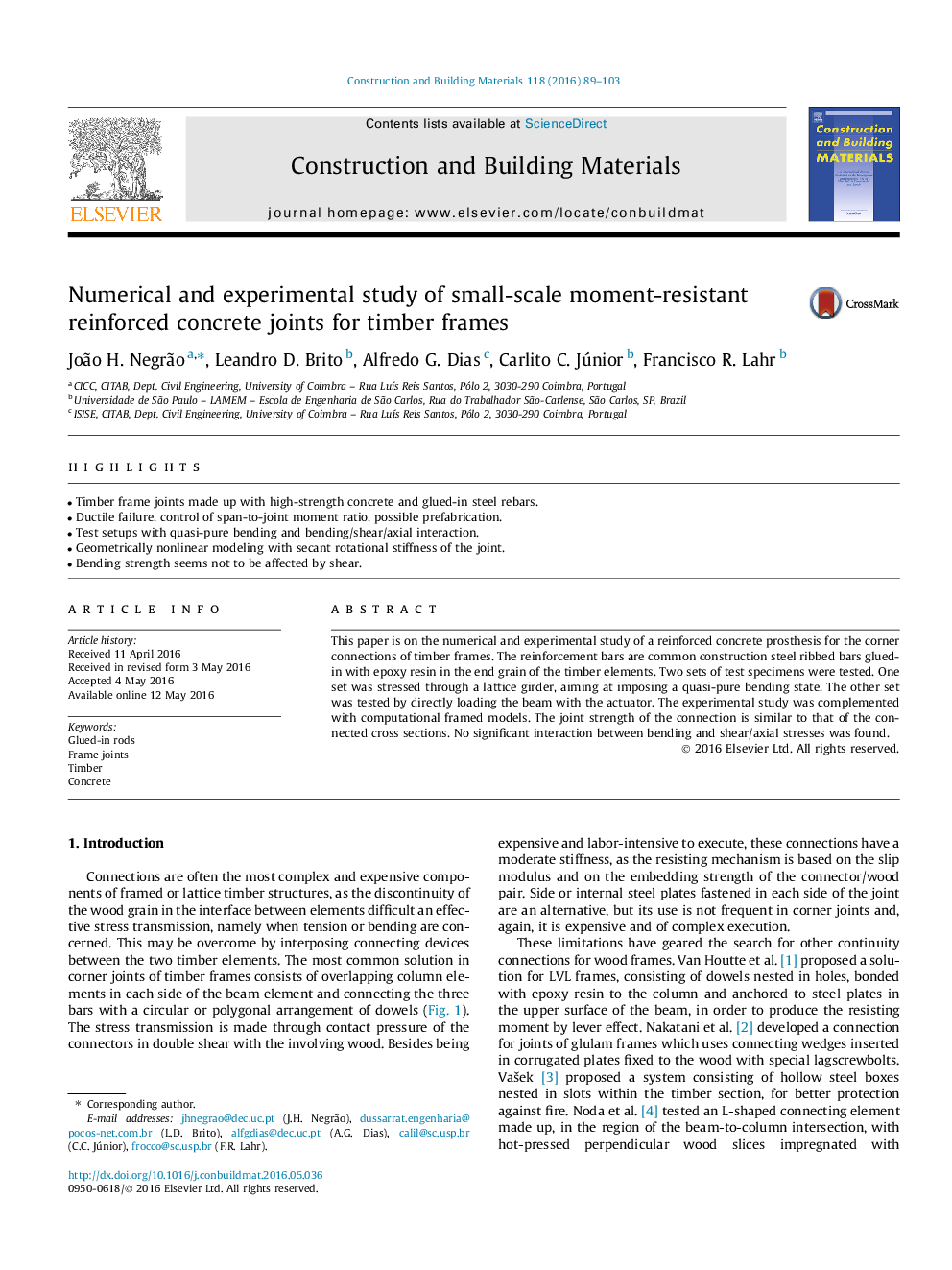| Article ID | Journal | Published Year | Pages | File Type |
|---|---|---|---|---|
| 255885 | Construction and Building Materials | 2016 | 15 Pages |
•Timber frame joints made up with high-strength concrete and glued-in steel rebars.•Ductile failure, control of span-to-joint moment ratio, possible prefabrication.•Test setups with quasi-pure bending and bending/shear/axial interaction.•Geometrically nonlinear modeling with secant rotational stiffness of the joint.•Bending strength seems not to be affected by shear.
This paper is on the numerical and experimental study of a reinforced concrete prosthesis for the corner connections of timber frames. The reinforcement bars are common construction steel ribbed bars glued-in with epoxy resin in the end grain of the timber elements. Two sets of test specimens were tested. One set was stressed through a lattice girder, aiming at imposing a quasi-pure bending state. The other set was tested by directly loading the beam with the actuator. The experimental study was complemented with computational framed models. The joint strength of the connection is similar to that of the connected cross sections. No significant interaction between bending and shear/axial stresses was found.
